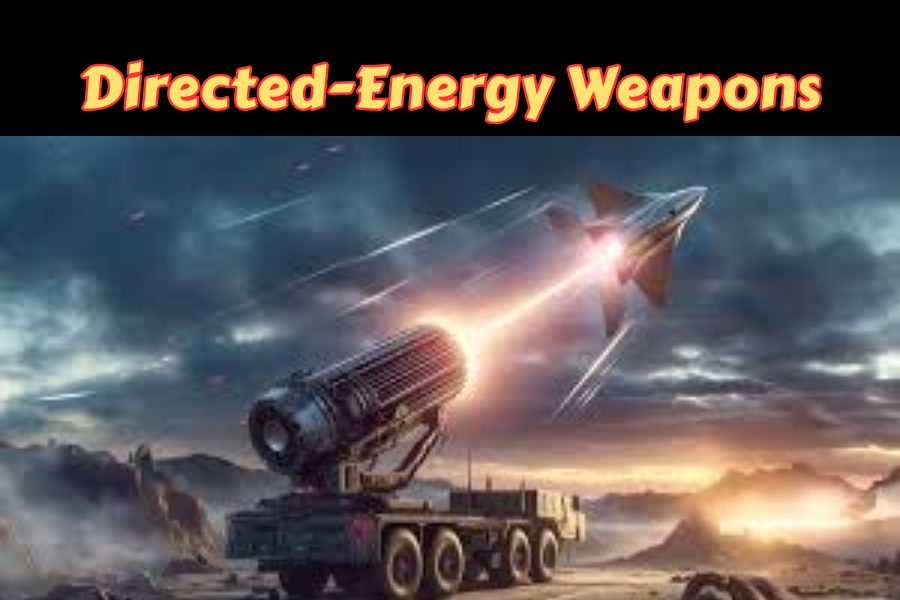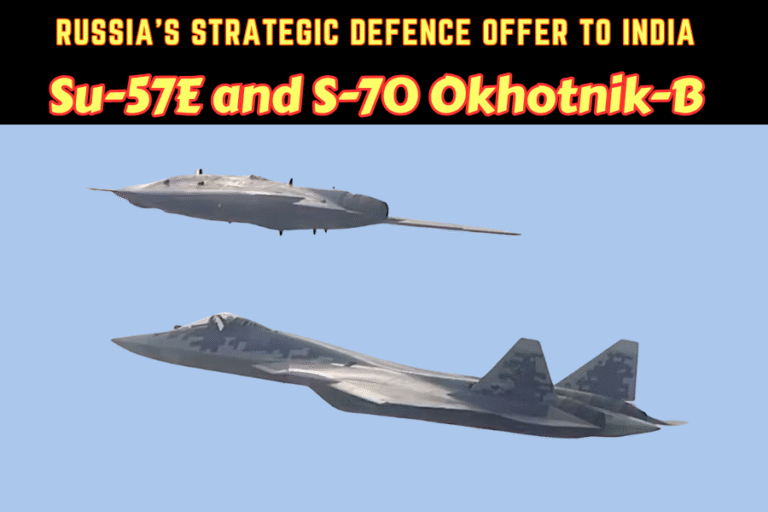(By Khalid Masood)
Introduction
The evolution of warfare has always been driven by technological leaps — from gunpowder to nuclear weapons, and from precision-guided munitions to unmanned systems. Today, the next transformation is already taking shape in the form of directed-energy weapons (DEWs). These systems harness concentrated energy, rather than explosive force, to disable, damage, or deter adversaries.
At the heart of this revolution stand two technologies: High-Power Lasers (HELs) and High-Power Microwaves (HPMs). No longer the stuff of science fiction, both are being actively tested and, in some cases, readied for deployment. Israel, the United States, China, and several other powers are pushing the boundaries of what DEWs can achieve.
For smaller states such as Pakistan, or regional organisations like the Gulf Cooperation Council (GCC), understanding these technologies is not optional; it is imperative for strategic planning. This article examines the current state of HEL and HPM development, their advantages, challenges, and countermeasures, and their potential impact on global strategic balances.
What Are HELs and HPMs?
- High-Power Lasers (HELs): HELs generate concentrated beams of coherent light. When directed at a target, the energy rapidly heats and weakens materials, causing damage or destruction. Unlike kinetic weapons, HELs strike at the speed of light, making them invaluable for intercepting fast-moving threats such as drones, rockets, and mortar rounds.
- High-Power Microwaves (HPMs): HPM weapons emit bursts of electromagnetic radiation that disrupt or permanently damage electronic systems. Their targets range from unmanned aerial systems (UAS) to communications infrastructure and radar networks. Unlike lasers, which focus on physical destruction, HPMs focus on rendering systems electronically inert.
Together, HELs and HPMs represent a new layer of warfare, where speed, precision, and energy replace traditional ammunition.
Advantages of Directed-Energy Weapons
- Instantaneous Response: Lasers and microwaves engage targets at the speed of light, providing almost immediate defence against aerial or missile threats.
- Low Cost per Engagement: Once integrated with power sources, each shot costs only the electricity consumed. By contrast, interceptor missiles can cost millions of dollars per launch.
- Unlimited Firing Potential: As long as sufficient energy is generated, DEWs can continue firing without concerns about ammunition stockpiles or logistics.
- Precision with Reduced Collateral Damage: Directed energy allows militaries to selectively disable or destroy targets, reducing the risk of unintended civilian casualties or infrastructural damage.
- Flexibility Across Missions: From non-lethal crowd control (via HPM systems) to high-precision anti-drone engagements, DEWs are versatile tools that fit within a wide spectrum of operational contexts.
Limitations and Challenges
Despite their promise, DEWs face a number of practical hurdles.
- Environmental Sensitivity (Lasers): Fog, rain, dust, and smoke significantly degrade laser performance by scattering or absorbing the beam. Their effectiveness is therefore limited in adverse weather conditions.
- Energy and Cooling Demands: Both HELs and HPMs require immense electrical power and advanced thermal management systems. While naval ships and large ground vehicles can support such needs, smaller platforms remain constrained.
- Target Complexity and Countermeasures: HPMs require precise radiation shaping to disable specific electronic systems, while hardened or redundant circuits may resist attack. Lasers, meanwhile, can be overwhelmed by swarm tactics or by reflective/heat-resistant coatings.
- Integration into Command Structures: Militaries must adapt existing doctrines and training to incorporate DEWs effectively. This requires not only technology, but also mindset and structural change.
Global Examples of DEW Development
Israel
- Iron Beam: A 100 kW-class HEL system designed to complement the Iron Dome missile defence system. Reports suggest it could be deployed operationally by 2025. Its primary targets include drones, rockets, and mortars, offering Israel a low-cost counter to high-volume, low-cost projectiles used by its adversaries.
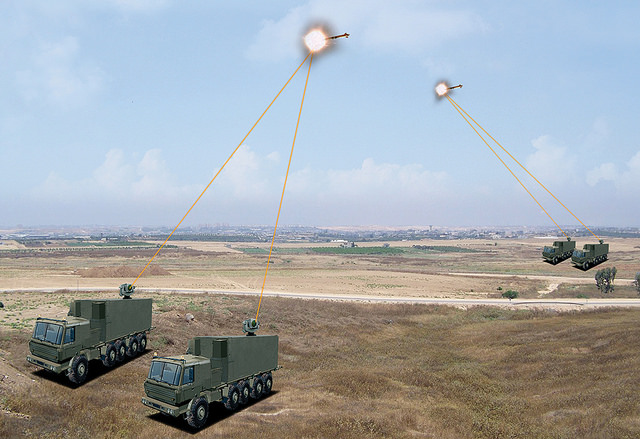
United States
- U.S. Navy: Systems such as the Laser Weapon System (LaWS) and subsequent upgrades have been tested on vessels like the USS Preble. The Navy aims to integrate HELs into layered ship defence against drones, missiles, and fast attack craft.
- U.S. Army: Programmes such as the P-HEL (Portable High-Energy Laser) and the Directed Energy Maneuver-Short Range Air Defence (DE M-SHORAD) have successfully demonstrated HELs on Stryker vehicles.
- Active Denial System (ADS): A non-lethal HPM-based system designed for crowd control, using millimetre waves to cause intense discomfort without permanent harm.
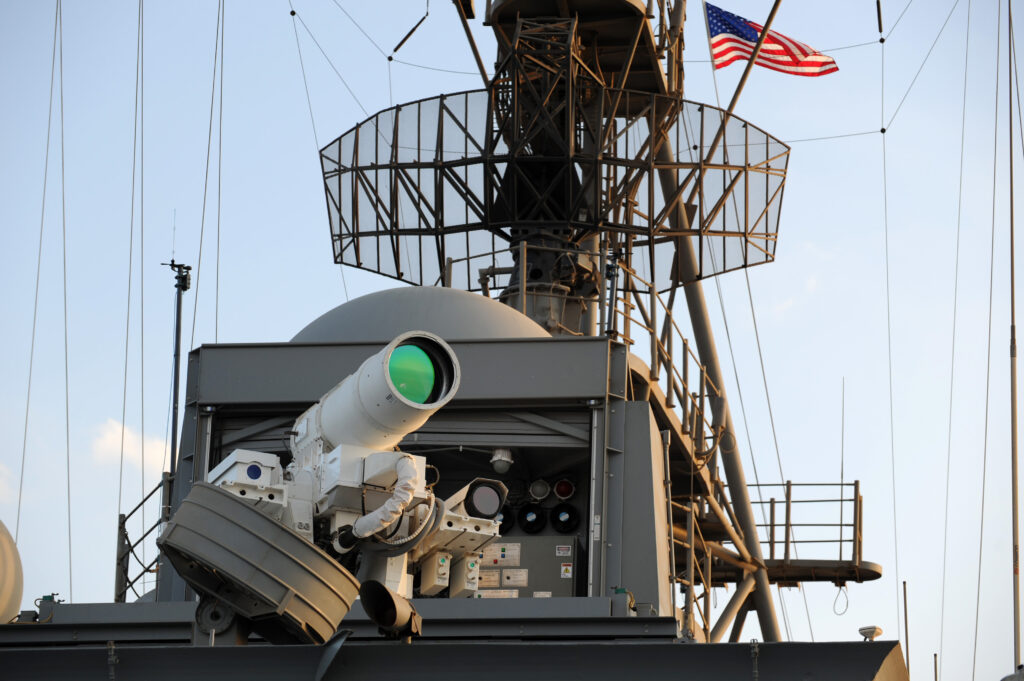
China
China has invested heavily in DEW research, seeking to close the technological gap with the United States.
- Silent Hunter: A portable laser system with reported capability to destroy drones at ranges of 4–5 km. It has been publicly displayed at arms expos, signalling Beijing’s intent to market HEL technology internationally.
- Poly WB-1: A vehicle-mounted HPM system revealed in 2014, designed to disable electronics of aerial and ground-based systems.
- Reports indicate Chinese interest in scaling HELs for space-based and anti-satellite applications, underscoring the strategic ambitions tied to directed energy.
China’s progress is particularly noteworthy as it suggests that DEWs may not remain the monopoly of Western or Israeli forces. For countries like Pakistan, this raises both opportunity and concern: potential access to Chinese technology, but also the risk of adversaries acquiring similar systems.
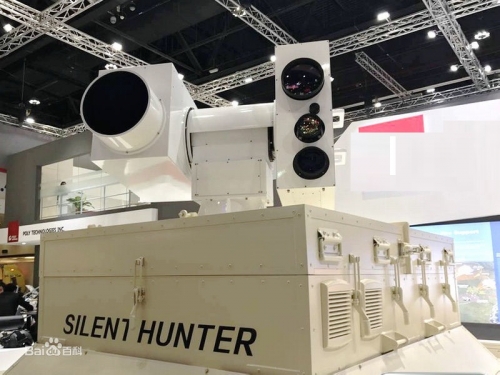
Defence Against DEWs
As offensive directed-energy systems evolve, so too do defensive measures:
- Protective Materials and Coatings: Development of reflective, heat-resistant, or ablative coatings to mitigate the impact of lasers. Research into metamaterials may yield advanced shielding.
- Electronic Hardening: Redundant circuits, electromagnetic shielding, and filtering can protect against HPM effects. Military electronics are increasingly designed with EMP and microwave resilience in mind.
- Tactical Countermeasures: Adversaries may employ saturation tactics, launching swarms of drones or salvos of rockets to overwhelm single-beam DEWs. Manoeuvrable drones or decoys further complicate targeting.
- Strategic Deception: Concealment through camouflage, obscurants (smoke, aerosols), and decoys can reduce DEW effectiveness, particularly against lasers.
Legal, Ethical, and Strategic Considerations
- Legal: The use of DEWs is governed by international humanitarian law. Non-lethal systems raise questions about compliance with human rights norms, especially in policing or crowd-control contexts. The potential use of DEWs in space could also contravene existing treaties.
- Ethical: While marketed as precise and humane, DEWs may have unforeseen long-term health consequences (e.g., from prolonged microwave exposure). Their potential for misuse in domestic repression is also a concern.
- Strategic: The proliferation of DEWs may alter military balances by neutralising low-cost weapons like drones or rockets. States that rely on such systems for deterrence may find their arsenals rendered obsolete, potentially fuelling escalation. Furthermore, widespread deployment of DEWs could reduce reliance on traditional munitions supply chains, transforming the economics of war.
Implications for Pakistan and the Wider Muslim World
For Pakistan, the rise of directed-energy weapons presents both risks and opportunities:
- Risks: If adversaries such as India or Israel integrate HELs and HPMs into their arsenals, Pakistan’s current deterrence tools — including drones, rockets, and electronic warfare systems — could be significantly undermined. This risks strategic imbalance, particularly in short-range engagements.
- Opportunities: Pakistan enjoys close defence ties with China, a leading actor in DEW development. Collaborating on research, training, and eventual acquisition of HEL/HPM systems could provide Islamabad with affordable defensive tools. Furthermore, indigenous research in electronic hardening and counter-DEW tactics could preserve deterrence credibility.
For the wider Muslim world, especially Gulf states like Saudi Arabia, the UAE, and Qatar, DEWs may serve as a cost-effective way to defend against drone and missile threats from non-state actors and regional rivals. However, reliance on Western or Israeli systems may also create strategic dependencies.
Policy Recommendations
- Investment in Indigenous R&D: Pakistan and its partners should invest in local research on directed-energy technologies, even if initial efforts are modest. Building domestic expertise is vital.
- Collaboration with China: Strategic cooperation with Beijing in DEWs offers a realistic pathway to access cutting-edge systems at manageable cost.
- Focus on Countermeasures: Even if HEL/HPM systems are not immediately procured, investment in electronic hardening, reflective materials, and tactical doctrine will mitigate vulnerability.
- Strategic Dialogue: Pakistan should advocate within the Organisation of Islamic Cooperation (OIC) for a coordinated approach to emerging DEWs, preventing technological surprise and reducing dependency on external suppliers.
- Legal Preparedness: Islamabad should study and engage in international legal debates on DEWs to ensure its interests are represented in any future treaties or conventions.
Conclusion
High-Power Lasers and High-Power Microwaves are rapidly moving from experimental technologies to battlefield realities. Israel’s Iron Beam, America’s shipborne lasers, and China’s Silent Hunter all demonstrate that DEWs are no longer hypothetical — they are here.
Their advantages — speed, precision, and low cost per shot — are compelling. Yet their challenges — environmental vulnerability, energy demands, and ethical-legal complexities — remain significant. The race is not just technological, but strategic: who integrates DEWs effectively, and who develops countermeasures fast enough to preserve balance.
For Pakistan and other Muslim states, the lesson is clear: ignore DEWs at your peril. Whether as a defensive shield against drones and rockets, or as a strategic tool to maintain parity with adversaries, directed energy will define the next era of military capability. Nations that fall behind may find their deterrence eroded, while those who prepare will secure a measure of technological resilience in an increasingly uncertain world.

